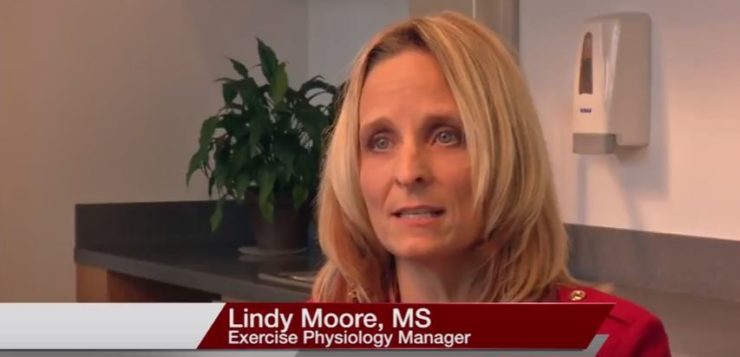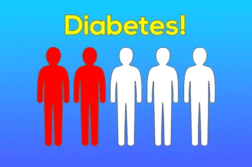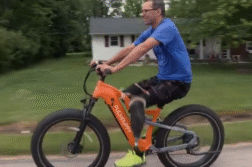Lindy Moore, M.S., an Exercise Physiologist and Exercise Physiology Manager at Florida Hospital talks about how measuring the waistline could tell doctors more about the childhood risks of diabetes.
Interview conducted by Ivanhoe Broadcast News in September 2015
We’ve heard a lot about kids and obesity over the last few years, but with that has come an increase in other health risks as well. Can you speak to that a little bit? What are we seeing in kids these days that we never would have seen 15, 20 years ago?
Lindy Moore: In kids today, we are seeing a prevalence of diabetes. It even goes to the point of nomenclature. Years ago, type-one diabetes was exclusively for children, it was formerly known as juvenile diabetes. We’re seeing it so much more prevalently now, in our type-two diabetics, younger and younger generations. We’re seeing them as young as six and seven starting to develop type-two diabetes. So the prevalence of type-two diabetes, which in many cases is more common and more frequent than our type-one diabetes, is running rampant. We could say nearing an epidemic.
What is the concern among health professionals? We have so many kids starting with a disease, a disease that used to be thought of middle age or elderly disease.
Lindy Moore: A big concern with children having that early and earlier onset of diabetes and other chronic disease processes or syndromes is that many of the processes and trainings that exist are for an adult population. As we know, kids are not miniature adults. Whether it be medications, the process to prevent, even an exercise regimen that would be appropriate for an older adult is not appropriate for younger children. Therefore, our processes or our approach to the disease has changed significantly throughout the healthcare industry.
Now, for a while, it’s been established that waist size, or the apple shape versus pear shape, was indicative of certain diseases in adults. Is that also the case that you’re finding with this study in kids?
Lindy Moore: That’s part of the reason our study came into existence. In adults it is understood that larger hips, carrying more of your weight in your hips, is a healthier placement for your abdominal obesity. But if you have more of it in the abdominal area, which you’re starting to see not only in adults but also in children that is an indicator that these children are in need of additional healthcare or closer following to make certain that they don’t develop some of these diseases; whether it is cardiovascular disease, diabetes, or metabolic syndrome. There seems to be a correlation in the adult world which is known and tried and true. In the pediatric world, that doesn’t exist. Those scientific evidence-based or scientific-based methods don’t exist for kids. Not yet.
I want to talk to you about the basis of your study. What were you looking at?
Lindy Moore: We were discovering in our pediatric population between the ages of six to 17, a common bond, if you will, that those children that had higher central adiposity, or weight within the belly region, were having higher indicators, lab markers, whether through blood work or other markers, and they were at a higher risk for developing diabetes. They had earlier insulin resistance, they had higher blood pressure, they had higher cholesterol levels. We were starting to see this correlation, which was following in line with what exists for adults. We have a ratio that exists for adults that’s a very easy tool to use to determine those that require greater care or closer watch and we wanted to see if that translated into the pediatric population and thus the birth of the study. The study came about because lab draws or blood draws in children is a little uncomfortable to say the least, from both a parental standpoint as well as the kids. They’re scared. They don’t want to have their blood drawn or something more invasive than a finger stick. And a lot of the markers that we’re looking for to diagnose insulin resistance and early onset diabetes is through a blood draw. That has to be done with syringes and that’s a scary, scary experience. They even go the point where they’re using sedation. They’ll medically sedate these children just to get blood work. If we could have something as an easier tool, a less invasive tool, that brought the birth of discovering if waist and hip ratio in children could be more diagnostic or give a similar diagnosis as adults.
What did you do? What are the parameters of the study?
Lindy Moore: We’re looking at all of the children enrolled in our Center for Family and Child and Family Wellness Program, analyzing their blood work in addition to their waist and hip circumference. We would actually ask the kids, “did you bring your belly button today?” First of all, it’s a great way to break the ice. It’s a little intimidating for a kid to come in and understand why they are being seen by not only a doctor, but a team of specialists. For them to break the ice and say, “you brought you belly button, right?” I’d say, “Wonderful, well, I’d like to measure it.” It was a great starting point for us to easily measure their waist and measure their hips. Especially the younger girls as they’re growing older, they would like to know what their waist and hip measurements were to see if they’re getting closer to maturity. We would simply look at their waist and their hips and create a ratio between the two and correlate that ratio to their blood work. If they received their blood work, we looked at insulin levels, we looked at glucose levels and we looked at their blood pressures, heart rate, and cholesterol levels.
What did you find?
Lindy Moore: We were finding there was a significant correlation to those children that had a higher central adiposity, those that had a greater waist circumference ratio in relation to their hips, to higher cholesterol levels, higher levels of insulin, which suggested insulin resistance or knocking on the door of prediabetes. Some even did receive the diagnosis of diabetes type-two.
What was that waist to hip ratio?
Lindy Moore: The waist and hip ratio is the division of the waist measurement into the hip measurement. You come up with a ratio that we would seek and the goal in adults is to be less than 1.0. So 1.0 or greater in adults is suggestive of potential for development of a chronic disease. The ratio, 0.8 to 0.9, is our preferred health zone for adults.
How about in kids?
Lindy Moore: In kids, we’re starting to see the correlation in that those that have a waist to hip ratio of 0.9 or greater to having those preliminary markers in their blood that is suggestive of chronic disease.
Why is it important to have this noninvasive way, this tool, and also this indicator that this is matching up with, why is it that important to have for kids?
Lindy Moore: This tool is an excellent opportunity for not only clinical healthcare providers, but even schools: school nurses, exercise physiologists. It can really be an easily accessible tool for these caregivers, even parents could do this test at home and say “oh, well, we see those numbers are a little bit high, maybe we could start to get some closer healthcare or maybe start to make earlier changes”. Or “we’ve always been thinking of starting our gym routine maybe this will help push us to do it a little bit earlier”.
Since you mentioned adults doing it at home, and you talked about doing it in the lab, you said, one measurement is around the belly button and where’s the hip measure?
Lindy Moore: The hip measure comes from the most prominent part of the hips. We always call it: we look for bellies and booties. These kids, again, enjoy that. we measure the most prominent part of the lower hip.
And you divide the waist?
Lindy Moore: The waist into the hips.
Waist into hips, and if you have a 0.9 or greater, that could be an indication that you might need to look for solutions?
Lindy Moore: That’s correct, 0.9 or greater if they are males. For females, we are a little stricter with 0.8-0.9, but yes generally 1.0 is really our marker that states we need to make some changes.
Is this study still ongoing and how many kids you looked at?
Lindy Moore: We looked at 745 children in our preliminary program or in our preliminary research. This is ongoing research in that we look to look at a future correlation comparing to normally weighed children in addition to our overweight children, looking for correlations.
Is there anything I didn’t ask you that you think is important for people to know and parents to know?
Lindy Moore: I think it’s a good for parents to have and caregivers to understand that BMI, although the main primary indicator that we utilize now to determine overweight and obesity, can be skewed. I think waist and hip offers an alternative to the BMI. Because we may have children that are in the midst of a growth spurt, we may have children that are taller and more muscularly built in which the BMI does not account for.
But this gives you again another, another indicator?
Lindy Moore: Absolutely.
When did the study begin?
Lindy Moore: The study began 2010 and it ran through 2012.
And now, it’s still ongoing?
Lindy Moore: We’ve completed that study and we look forward to do the correlation with normally weighted children.
And this was recently published?
Lindy Moore: It was in The Journal of Pediatric Healthcare. It came out in publication in the July/August 2015 edition.
END OF INTERVIEW
This information is intended for additional research purposes only. It is not to be used as a prescription or advice from Ivanhoe Broadcast News, Inc. or any medical professional interviewed. Ivanhoe Broadcast News, Inc. assumes no responsibility for the depth or accuracy of physician statements. Procedures or medicines apply to different people and medical factors; always consult your physician on medical matters.
If you would like more information, please contact:
Florida Hospital Corporate Communications
407-303-8217
fhcorporatecommunicationsteam@flhosp.org
Sign up for a free weekly e-mail on Medical Breakthroughs called First to Know by clicking here.




